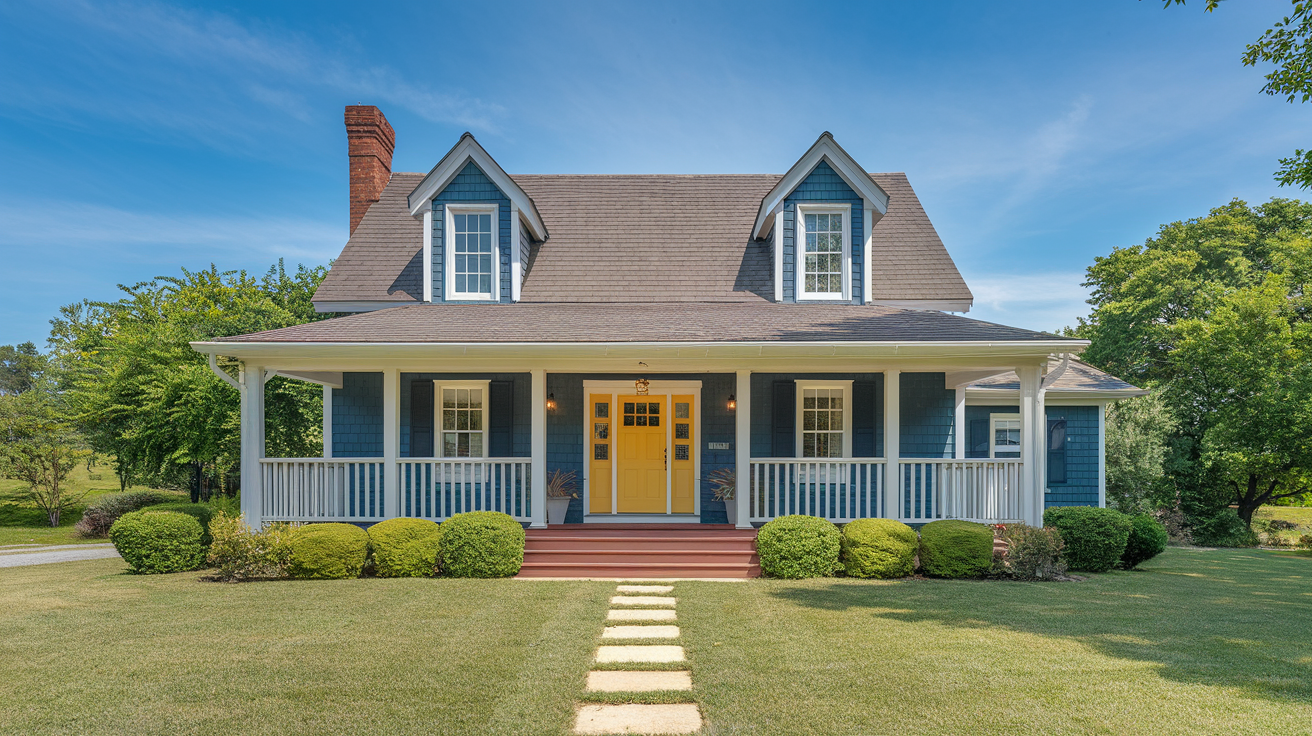Rightsizing vs. Downsizing: Are You Living in the Right-Sized Home?
Exploring the benefits and challenges of rightsizing and how it sets itself apart from downsizing.
Most of us are familiar with the concepts of a “starter home” and a “dream home.” The former is typically a modest, affordable place that serves as your entry into homeownership, while the latter is the larger, ideal home you aim to grow into as life progresses. Eventually, many homeowners downsize, transitioning to a smaller home that better suits their needs in later years. But have you heard of a concept called “rightsizing”?

housekeepingbay
Understanding Rightsizing
Rightsizing goes beyond simply changing the size of your home—it’s about finding a space that perfectly suits your current lifestyle and needs.
“Rightsizing a home does not define increasing or decreasing the size of your home. You are adjusting your home size to better fit your needs,” explains Jessica Duncan, a realtor with BHG Real Estate Main Street Properties. This could involve moving to a larger space, finding a home with a more efficient layout, or even opting for a smaller, more manageable property.
Rightsizing vs. Downsizing: What’s the Difference?
While downsizing generally means moving to a smaller, often more affordable home, rightsizing is a broader and more personalized approach. Edward Sattler from BHG Real Estate Green Team describes it this way: “Downsizing is just numbers, big to small, and you might not get what you’d hoped for.” Rightsizing, however, is all about aligning your living environment with where you are in life, which could mean adjusting the size, layout, or even the location of your home.
Michael Yehuda, a sales associate with Coldwell Banker Warburg, adds, “Downsizing is a specific form of rightsizing that emphasizes a reduction in physical space and possessions, often driven by simplification and financial considerations. Rightsizing, on the other hand, is a more comprehensive and flexible approach that involves adjusting living conditions to optimize for various aspects of life, including work, health, and family dynamics.”
Knowing When It’s Time to Rightsize
The best time to rightsize is when you realize that your current home no longer supports the life you want to live. Duncan suggests considering the lifestyle you envision and how a new home could help make that a reality.
A 2023 survey by Opendoor revealed that many Americans are prioritizing simplicity, seeking homes with less clutter and fewer unused spaces. According to Jennifer Patchen, a real estate broker with Opendoor, health concerns are often a major factor in this decision. “According to Opendoor’s 2023 survey on simple-sizing, health concerns (57%) became the biggest factor driving their decision to simple-size, which can be especially important for seniors and retirees,” Patchen says.
Rightsizing can bring a host of benefits, even if it doesn’t necessarily mean saving money.
“Rightsizing your home can have a huge emotional impact on your well-being,” Duncan explains. “It can reduce stress, free up more time, or even provide a space for everything to create less clutter in your life—all three of these effects can improve your psychological well-being.”
Rightsizing During Retirement
For many people, the decision to rightsize comes as they enter retirement. At this stage, the need for a large home often diminishes, especially after the kids have moved out.
“Rightsizing for retirees can have many benefits, including lower payments, less maintenance expenses, or just providing a home that fits their current lifestyle,” Duncan says.
It’s not only about needing less space; it’s also about finding a home that requires less upkeep. “Many retirees dream of traveling more often,” Duncan adds. “Rightsizing to a condo or community that includes yard maintenance, exterior maintenance, and more security over your home while traveling” is attractive.
What to Look for When Rightsizing
When searching for a home that’s a better fit for your current stage of life, it’s important to consider more than just the square footage. Location, maintenance requirements, and how the home supports yo
ur daily life should all be part of the decision.
“The best advice I would give to someone looking to rightsize their home is to think about the life you want, not the life you have right now. Dream about what the day-to-day would be like and how the new home can facilitate these dreams,” Duncan advises.
For some, this might mean choosing a smaller home in a vibrant, walkable neighborhood. For others, a larger yard for gardening or outdoor activities might become more appealing in retirement.
Edward Sattler encourages thinking about how your resources—time, money, and energy—can be better utilized in a new home. “How do you want to allocate resources: your time, your money, your emotional and physical and spiritual energies?” he asks.
For many, rightsizing might involve moving away from the hustle and bustle of the city to a quieter area. According to Opendoor’s 2022 Hottest ZIP Codes report, one-third of people across the U.S. said they would relocate for a lifestyle change, whether to be closer to outdoor and recreational activities or to join a close-knit community.
Embracing Rightsizing
Rightsizing isn’t just about opting for a smaller or more affordable home; it’s about finding the right home for you. Whether that means a different size, layout, or location, rightsizing can help you create a more fulfilling, comfortable lifestyle where your home truly supports your needs and dreams.

housekeepingbay
